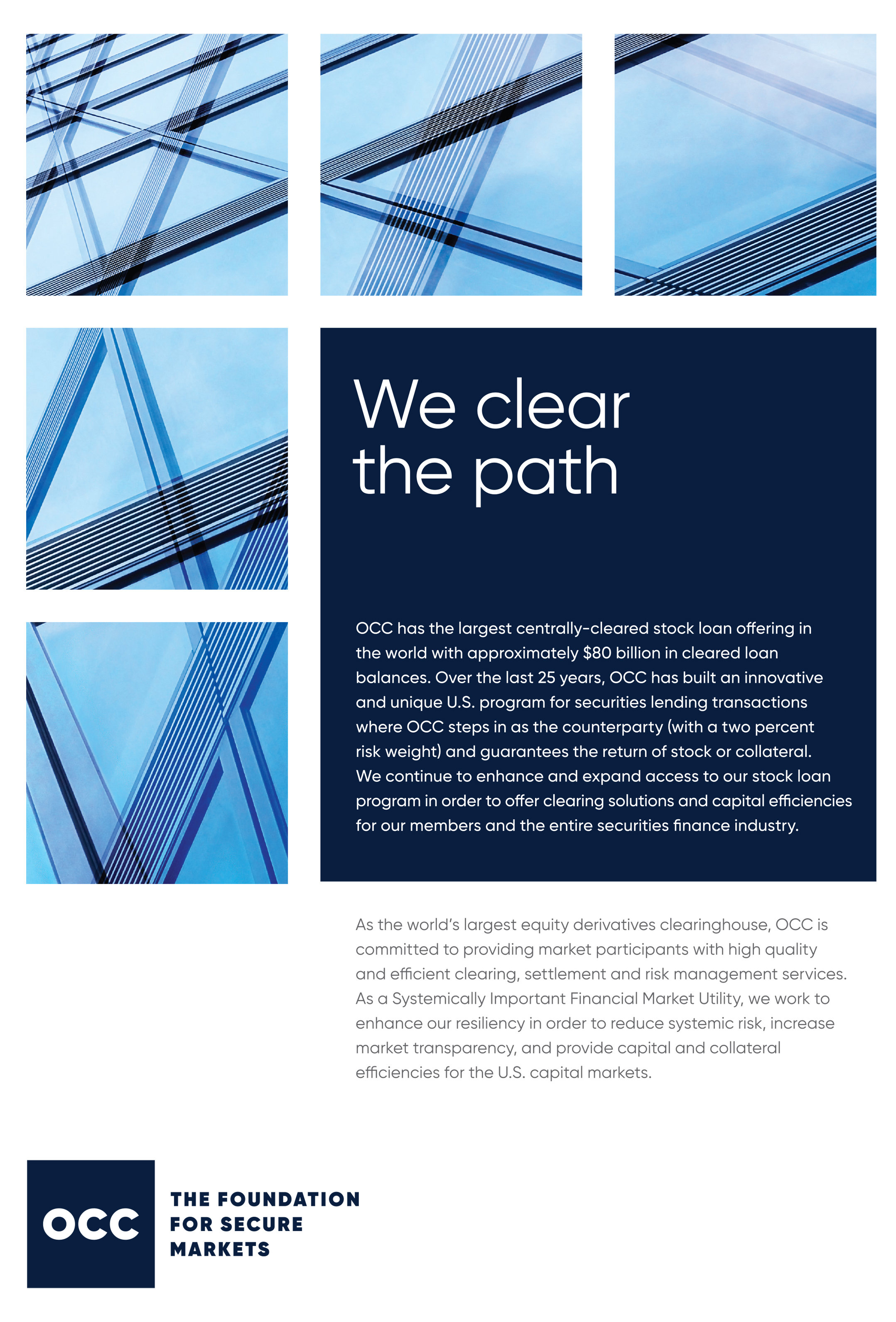Securities finance: a holistic approach to optimising your portfolio and alpha generation
26 April 2022
Upgrading to a centralised data platform that provides real-time views can empower investors to leverage their assets and seize new opportunities to boost portfolio returns, says Northern Trust's Judson Baker and Mark Jones
 Image: stock.adobe.com/prawest
Image: stock.adobe.com/prawest
As institutional investors face multiple pressures to enhance alpha generation, firms that use a holistic approach to their financing, liquidity and collateral needs are best positioned to optimise their portfolios for greater revenue potential and higher returns. Given this, it is not surprising that firms are increasingly upgrading their securities finance strategies to incorporate integrated frameworks that allow the collective leveraging of their assets while improving control and monitoring.
At the highest level, an integrated securities finance framework allows buy-side firms to make the best decisions on utilising their assets to achieve specific goals. By thinking holistically about financing and liquidity products, such as securities lending, borrowing, repo, collateral management and cash products, firms with a mandate to make risk-based decisions on optimal use of their portfolio are better able to identify and execute opportunities.
As an asset servicer, there have been many times that Northern Trust has seen firms want to use the same asset for two different purposes — for example, its collateral department pledging out a security only to find that the same security was just repo’ed out for cash, meaning they must then scramble to find a different security. Upgrading to an integrated securities finance framework allows firms to coordinate their assets and optimise usage for the same asset pool.
A successful integrated securities finance framework starts with two critical features: inventory aggregation of assets; and real-time access to an updated, refreshed view of that inventory.
First, firms need to aggregate their asset pool into a centralised place that is accessible to everyone, removing silos or barriers. Second, they need a platform that provides a real-time reflection of those assets because, with different parts of an organisation tapping into a central asset pool, latency in data updates can cause problems. That is a critical foundation to being able to maximise alpha.
Market forces are driving firms to make their securities finance strategies more effective. From a buy-side perspective, the two most influential drivers are the increase in regulatory requirements and mounting pressures for firms to seek greater returns for their asset pools to generate alpha.
The derivatives space offers a great example regarding regulatory drivers. In September 2021, the fifth phase of the Uncleared Margin Rules (or UMR) became effective. This was a new requirement forcing several hundred firms to set aside more capital or pledge more assets to meet the margin obligations of their derivative trading portfolios. The sixth and final phase of UMR becomes effective in September 2022 and is anticipated to impact nearly a thousand firms globally. In order to be able to set aside more capital, firms will want to be sure they are maximising their assets, which can be supported by an effective securities financing strategy.
Banking regulations offer another clear example of how regulatory issues influence this space; each bank has its own liquidity ratios, leverage ratios, capital reserves and so forth that it must follow. Investors want to be sure they can meet each of these requirements and need to evolve their finance strategies to meet the changing regulatory environment.
Alpha generation
There is also a shift toward chasing alpha, with more firms trying to squeeze as much revenue out of their portfolios as possible. Many of Northern Trust’s clients use a buy-and-hold strategy that has their securities sitting on the sidelines. How can they leverage that asset pool to generate revenue? Traditionally, most have used securities lending and Northern Trust can facilitate those lending arrangements with broker-dealers who need to borrow securities. But we can also provide other services to help institutions seek alpha from their assets. Enabling repo clearing in the US for eligible US domiciled clients, for example, or aiding disintermediation.
Disintermediation – or when buy-side firms trade directly with each other instead of using an intermediary – is another trend driving the growing need for stronger securities finance strategies. In the past, most of the liquidity was between firms tapping into a small group of broker-dealers, including large banks and prime brokers. The trend of firms trading amongst themselves has been growing stronger for the last couple of years and that is compressing margins since there is no longer a broker arrangement. However, peer-to-peer trading can be difficult and firms need a party to bring those entities together and handle the administrative tasks and other important functions through the trade lifecycle. Northern Trust helps many institutional investors use disintermediation effectively and we serve as a key player in their trading relationships.
Institutional investors are dealing with a number of key challenges in improving their securities finance capabilities. For example, breaking down the historic silos inside their firms is one of the biggest hurdles that organisations face in creating a modern securities finance framework. A typical pension fund that does not manage their investments in house may have multiple asset managers, each with different mandates. This makes it more difficult to leverage their securities with a collective strategy. While seeing the big picture has been historically challenging for many firms, advances in technology – and growing market awareness – are changing this. Consider this a step beyond the traditional overlay strategy.
Technology is key to connecting the dots. Silos are much more easily dismantled with a strong, integrated technology platform. It can be a challenge to link legacy platforms together, but the technology is available and by connecting development closely with business objectives, it is possible to make incremental jumps forward without “big bang” implementations.
As a provider, Northern Trust is evolving our platforms to help our clients link their activity without requiring a big build on their side. Along with our ability to provide expertise and operational support, we can help to minimise the cost and effort required to realise the benefits of a strategically optimised securities finance approach.
Our securities finance offering provides a suite of integrated capabilities across securities lending and borrowing, financing and liquidity and collateral solutions.
At the highest level, an integrated securities finance framework allows buy-side firms to make the best decisions on utilising their assets to achieve specific goals. By thinking holistically about financing and liquidity products, such as securities lending, borrowing, repo, collateral management and cash products, firms with a mandate to make risk-based decisions on optimal use of their portfolio are better able to identify and execute opportunities.
As an asset servicer, there have been many times that Northern Trust has seen firms want to use the same asset for two different purposes — for example, its collateral department pledging out a security only to find that the same security was just repo’ed out for cash, meaning they must then scramble to find a different security. Upgrading to an integrated securities finance framework allows firms to coordinate their assets and optimise usage for the same asset pool.
A successful integrated securities finance framework starts with two critical features: inventory aggregation of assets; and real-time access to an updated, refreshed view of that inventory.
First, firms need to aggregate their asset pool into a centralised place that is accessible to everyone, removing silos or barriers. Second, they need a platform that provides a real-time reflection of those assets because, with different parts of an organisation tapping into a central asset pool, latency in data updates can cause problems. That is a critical foundation to being able to maximise alpha.
Market forces are driving firms to make their securities finance strategies more effective. From a buy-side perspective, the two most influential drivers are the increase in regulatory requirements and mounting pressures for firms to seek greater returns for their asset pools to generate alpha.
The derivatives space offers a great example regarding regulatory drivers. In September 2021, the fifth phase of the Uncleared Margin Rules (or UMR) became effective. This was a new requirement forcing several hundred firms to set aside more capital or pledge more assets to meet the margin obligations of their derivative trading portfolios. The sixth and final phase of UMR becomes effective in September 2022 and is anticipated to impact nearly a thousand firms globally. In order to be able to set aside more capital, firms will want to be sure they are maximising their assets, which can be supported by an effective securities financing strategy.
Banking regulations offer another clear example of how regulatory issues influence this space; each bank has its own liquidity ratios, leverage ratios, capital reserves and so forth that it must follow. Investors want to be sure they can meet each of these requirements and need to evolve their finance strategies to meet the changing regulatory environment.
Alpha generation
There is also a shift toward chasing alpha, with more firms trying to squeeze as much revenue out of their portfolios as possible. Many of Northern Trust’s clients use a buy-and-hold strategy that has their securities sitting on the sidelines. How can they leverage that asset pool to generate revenue? Traditionally, most have used securities lending and Northern Trust can facilitate those lending arrangements with broker-dealers who need to borrow securities. But we can also provide other services to help institutions seek alpha from their assets. Enabling repo clearing in the US for eligible US domiciled clients, for example, or aiding disintermediation.
Disintermediation – or when buy-side firms trade directly with each other instead of using an intermediary – is another trend driving the growing need for stronger securities finance strategies. In the past, most of the liquidity was between firms tapping into a small group of broker-dealers, including large banks and prime brokers. The trend of firms trading amongst themselves has been growing stronger for the last couple of years and that is compressing margins since there is no longer a broker arrangement. However, peer-to-peer trading can be difficult and firms need a party to bring those entities together and handle the administrative tasks and other important functions through the trade lifecycle. Northern Trust helps many institutional investors use disintermediation effectively and we serve as a key player in their trading relationships.
Institutional investors are dealing with a number of key challenges in improving their securities finance capabilities. For example, breaking down the historic silos inside their firms is one of the biggest hurdles that organisations face in creating a modern securities finance framework. A typical pension fund that does not manage their investments in house may have multiple asset managers, each with different mandates. This makes it more difficult to leverage their securities with a collective strategy. While seeing the big picture has been historically challenging for many firms, advances in technology – and growing market awareness – are changing this. Consider this a step beyond the traditional overlay strategy.
Technology is key to connecting the dots. Silos are much more easily dismantled with a strong, integrated technology platform. It can be a challenge to link legacy platforms together, but the technology is available and by connecting development closely with business objectives, it is possible to make incremental jumps forward without “big bang” implementations.
As a provider, Northern Trust is evolving our platforms to help our clients link their activity without requiring a big build on their side. Along with our ability to provide expertise and operational support, we can help to minimise the cost and effort required to realise the benefits of a strategically optimised securities finance approach.
Our securities finance offering provides a suite of integrated capabilities across securities lending and borrowing, financing and liquidity and collateral solutions.
NO FEE, NO RISK
100% ON RETURNS If you invest in only one securities finance news source this year, make sure it is your free subscription to Securities Finance Times
100% ON RETURNS If you invest in only one securities finance news source this year, make sure it is your free subscription to Securities Finance Times



